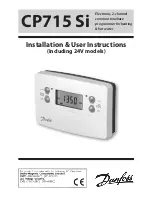
58
1.10 Eliminating the reasons for the alarm
Ç
Sabotage at the control unit, terminal or operator terminal
Check whether the lids of all devices are properly closed, i.e. whether the top is correctly latched into place and also
screwed to the internal housing.
È
Door sabotage (*)
Check the door and correct installation of the door / monitoring contact. If the door has not been sabotaged, it may
be necessary to enlarge the latch bolt throw of the mating part slightly in the emergency exit strike.
É
Ê
Emergency open
To reset the emergency switch, the cowling must be removed. In the terminal module, it is released from its
anchorage by turning the key-operated switch as far as the second stop in the counter clockwise direction.
The panic button of the emergency switch is also simply pulled out in the door terminal. In the terminal module, it
must be reset by a slight turn to the left or right. After this, the required switching status can be restored using the
key-operated switch.
In the terminal module, when the emergency switch cap is set for destructive operation, before replacing the
cowling, the cap must be renewed (see page 8).
Ë
Ì
Central emergency open
Initially, the central emergency open switch must be reset. After resetting, the individual doors must be switched
back to the required status.
Í
No locked status acknowledgement
This message can occur, for example, if the door has not been fully closed, so that in the case of surface holding
magnets the counter holding plate is not making contact with the pole surface or the emergency exit strike is unable
to lock because a strong door seal is pressing slightly onto its latch bolt. Ensure that the door is able to close
properly. (It may be necessary to reset the door shutter). In the case of surface holding magnets, no external
particles may be permitted to prevent the surface holding magnet from making flush contact with the pole surface.
Î
External emergency unlocking. (Fire alarm systems)
After acknowledging the alarm initially the external contact must be reset (closed again). After this, the required
switching status can be restored again at the control terminal.
Ï
Smoke detector line
When a smoke detector has triggered, turn the key-operated switch of the terminal momentarily to the left twice.
After the second momentary contact pulse, the alarm is reset after around 7 seconds and the detector loop
reactivated. (Provided there is no further evidence of smoke at the detector).
Please note that most alarm signals can be triggered also by a line interruption - for example a cable
breakage. If a check and remedy of the above listed criteria fail to reverse the alarm status, have the
installation checked by a specialist!
















































